Python in Telemedicine: Remote Healthcare
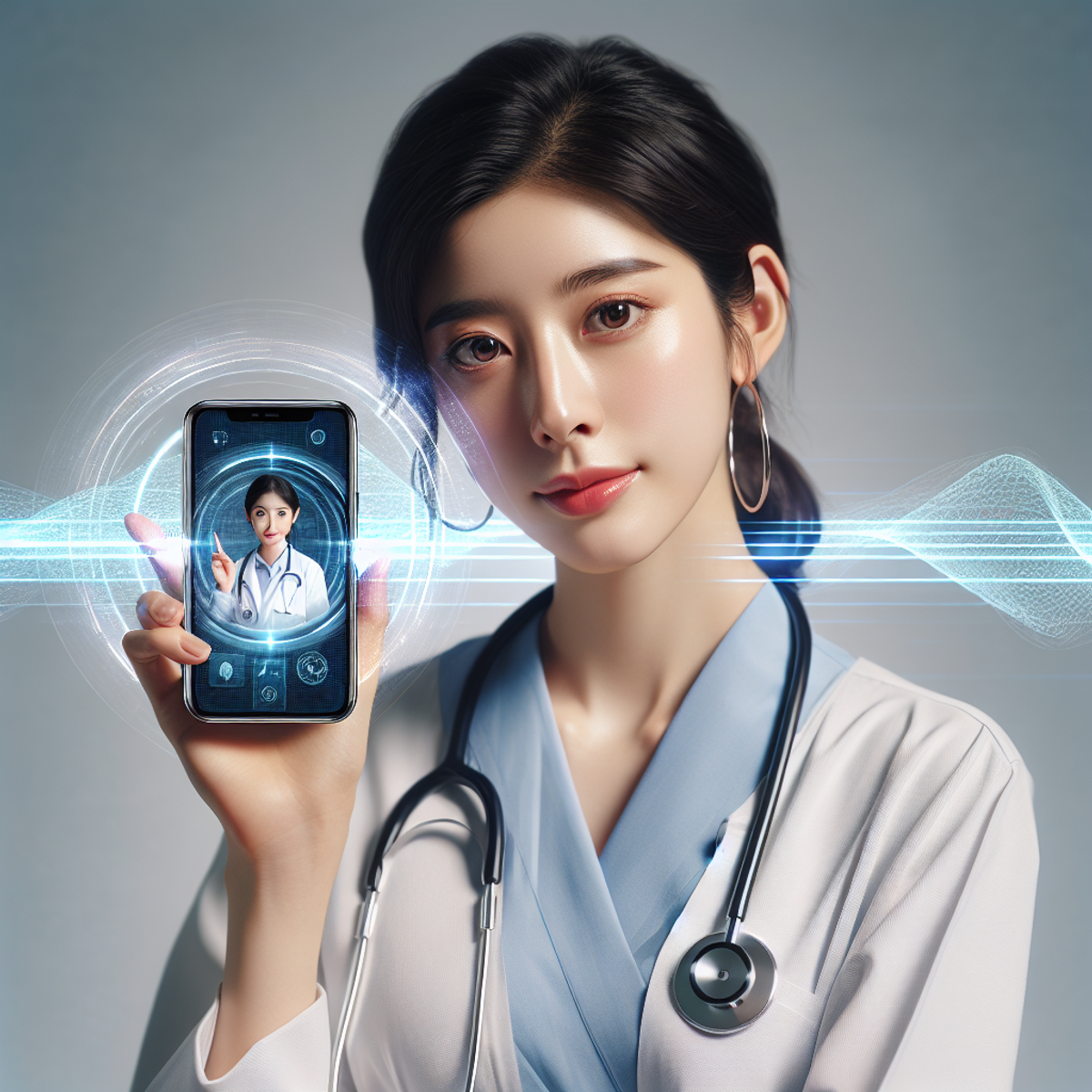
Python in Telemedicine: Remote Healthcare
Introduction
Telemedicine is the delivery of healthcare services remotely. It has become increasingly important, particularly when people have limited access to medical facilities. Python programming language is widely used in telemedicine solutions because of its flexibility and extensive library ecosystem. Python is applied in various aspects of telemedicine, including:
- Data analysis and visualization
- Machine learning and artificial intelligence
- Remote patient monitoring
Python's versatility and powerful features make it an excellent option for creating cutting-edge telehealth applications that meet different healthcare requirements.
The Importance of Remote Healthcare
In today's fast-paced world, we need remote healthcare options more than ever. There are times when people are in remote areas where they have limited or no access to medical facilities. This lack of access can make it difficult to get the medical care they need quickly. But thanks to technology, remote healthcare is now a possible solution to this problem.
Telehealth services, made possible by modern technology, play a crucial role in providing remote healthcare options. These services use different communication tools and platforms to connect patients with healthcare providers no matter where they are. By using telehealth services, people can get medical advice without having to go in person, which makes healthcare easier to reach.
The importance of remote healthcare goes beyond just being convenient. It also helps with important issues such as:
- Better access to healthcare: Remote healthcare options make sure that people living in rural areas or communities with limited resources have the same chances of getting good medical care. Through telehealth services, patients can talk to doctors and specialists from anywhere, which removes the problems of distance and reduces travel time and costs.
- Improved patient results: By using technology, remote healthcare lets doctors diagnose and treat patients faster. Patients can get medical advice and prescriptions quickly even if they're not physically at the doctor's office, which leads to better health results. Also, virtual appointments make it possible for doctors to keep an eye on patients and give them follow-up care without needing long trips.
- Less pressure on healthcare systems: Remote healthcare helps ease the load on regular healthcare systems by reducing the number of times people need to go in person for routine check-ups and minor illnesses. This lets doctors focus on more serious cases while still giving necessary care remotely.
Telehealth services offer many benefits:
- Virtual appointments: Patients can talk to doctors through video calls or secure messaging platforms instead of going there in person. This means they don't have to travel or wait at the clinic, and they can get medical advice from home.
- Remote monitoring: Telemedicine lets doctors keep track of patients from far away using wearable devices and sensors. These gadgets collect information about things like heart rate and activity level, which can then be sent to doctors for checking and help.
- Access to medical records: Electronic health records (EHRs) let healthcare providers see patient information from a distance. This makes sure that doctors have all the details they need to make good decisions during virtual appointments.
The importance of remote healthcare cannot be emphasized enough. It has the potential to change how we get medical care, making it easier, faster, and more convenient for people all around the world. Through telehealth services, patients can get timely medical attention no matter where they are. As technology keeps getting better, we can expect to see even more remote healthcare options becoming part of our daily lives.
Exploring Telemedicine and Its Components
Telemedicine, also known as virtual healthcare, is a rapidly growing field that utilizes technology to deliver medical services remotely. It plays a crucial role in providing healthcare options in situations where physical access to medical facilities is limited. In this section, we will explore the components of telemedicine and how they enable the delivery of virtual healthcare services.
Telemedicine Definition and Scope
Telemedicine can be defined as the practice of using technology to provide healthcare services remotely. It encompasses various modalities that allow patients and healthcare providers to communicate and interact without being physically present in the same location. This includes real-time video consultations, remote patient monitoring, and asynchronous communication through secure messaging platforms.
Types of Telemedicine Modalities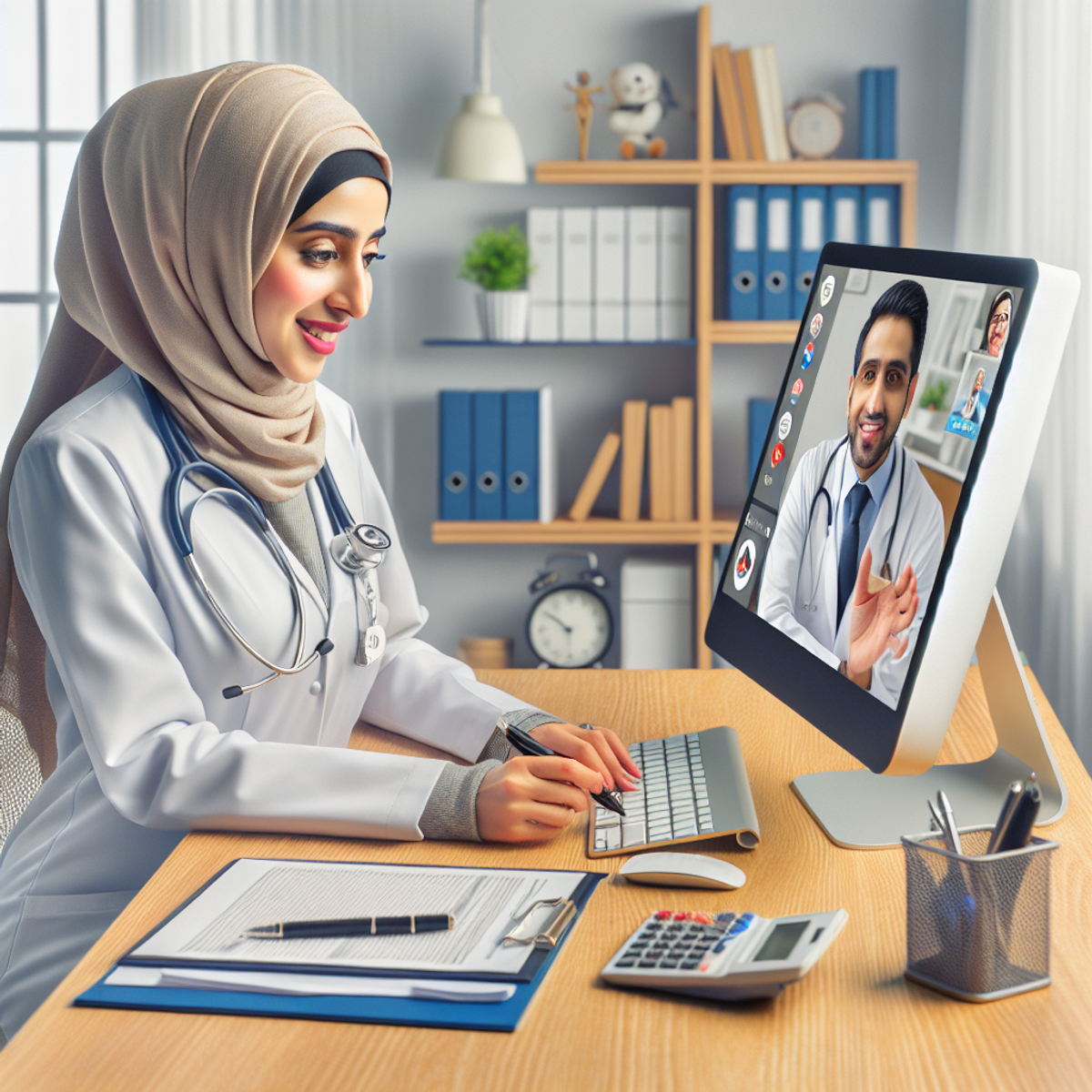
1. Synchronous Communication
This modality involves real-time interaction between patients and healthcare providers through video conferencing or phone calls. It enables virtual consultations that closely resemble traditional face-to-face visits, allowing for direct communication and immediate feedback.
Example: A patient in a remote area can consult with a specialist located in a different city through a video conference, eliminating the need for travel.
2. Asynchronous Communication
Asynchronous communication refers to non-real-time interactions between patients and healthcare providers. It involves the exchange of messages, images, or data at different times convenient for both parties.
Example: A patient can securely send medical history, lab results, or images to their healthcare provider through an online platform, and the provider can review and respond at their convenience.
Role of Remote Patient Monitoring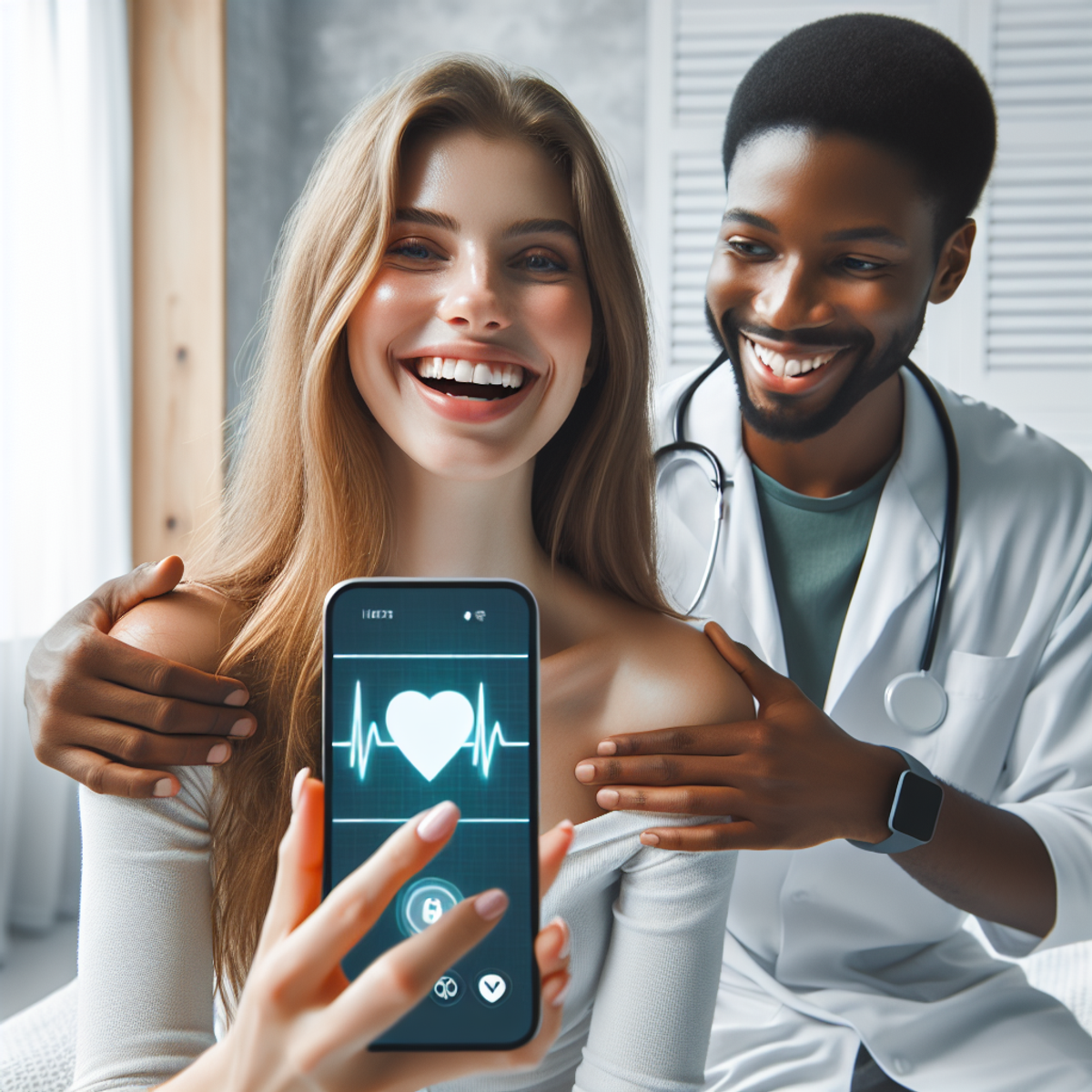
Remote patient monitoring (RPM) is a critical component of telemedicine that enables continuous care by collecting patients' health data outside traditional clinical settings. This is made possible through wearable devices, sensors, and mobile applications that track vital signs, activity levels, and other health-related information.
RPM offers several benefits:
- Early Detection: Continuous monitoring allows for early detection of deteriorating conditions and timely intervention, reducing the risk of complications and hospitalizations.
- Chronic Disease Management: RPM helps manage chronic conditions by monitoring key metrics, such as blood pressure or blood glucose levels, remotely. This promotes proactive care and empowers patients to actively participate in their treatment.
- Post-Operative Care: RPM facilitates remote monitoring after surgical procedures, enabling healthcare providers to track patients' recovery progress and intervene if necessary.
Integration of Python in Telemedicine
Python programming language is widely used in telemedicine solutions due to its versatility and extensive library ecosystem. It offers several advantages for developers:
- Readability: Python's clean syntax and readability make it easier to write and maintain code, enhancing collaboration among development teams.
- Data Analysis and Visualization: Python provides powerful libraries like Pandas and NumPy for analyzing large healthcare datasets and extracting meaningful insights. Additionally, libraries like Matplotlib and Plotly enable the visualization of data for better understanding and decision-making.
Future Trends in Telemedicine
The future of telemedicine holds immense potential for revolutionizing healthcare delivery. For instance, recent studies have explored the potential of artificial intelligence (AI) in telemedicine, which can significantly improve diagnostic accuracy, streamline workflows, and enhance patient outcomes. As technology continues to advance,
The Versatility of Python for Telemedicine Applications
Python as a Preferred Choice
When it comes to building telemedicine solutions, the Python programming language stands out as a preferred choice among developers. This preference can be attributed to several factors that make Python particularly well-suited for telemedicine applications.
1. Readability and Ease of Use
Python's simple and easy-to-understand syntax makes it an ideal language for developing telemedicine solutions. Its readability allows developers to write clean and concise code, which is crucial for building complex healthcare-related software with a focus on accuracy and reliability.
2. Extensive Library Ecosystem
Python boasts a rich ecosystem of libraries and frameworks that are specifically designed for data analysis, machine learning, and artificial intelligence – all of which are essential components of telemedicine applications. These libraries provide developers with powerful tools for processing and analyzing large volumes of medical data, as well as implementing advanced algorithms for image recognition, natural language processing, and more.
3. Interoperability and Integration Capabilities
Python's flexibility and interoperability make it well-suited for integrating disparate systems and technologies commonly used in telemedicine. Whether it's interfacing with electronic health record (EHR) systems, medical imaging devices, or wearable sensors, Python offers seamless integration capabilities that streamline the development of comprehensive telehealth solutions.
4. Community Support and Resources
The vibrant Python community ensures ongoing support and a wealth of resources for developers working on telemedicine projects. From online forums and tutorials to open-source contributions and collaborative development efforts, the community-driven nature of Python fosters innovation and knowledge-sharing in the realm of healthcare technology.
5. Real-World Examples
Numerous real-world examples demonstrate the effectiveness of Python in powering telemedicine applications. From remote diagnostic tools leveraging advanced machine learning algorithms to interactive data visualization dashboards used for monitoring patient vitals, Python's versatility is evident across various facets of virtual healthcare delivery.
Python's readability, extensive library ecosystem, interoperability, community support, and real-world success stories collectively position it as an indispensable tool for meeting the intricate demands of telemedicine development. With its ability to address diverse challenges inherent to remote healthcare delivery, Python continues to play a pivotal role in shaping the future of telemedicine solutions.
Key Areas of Utilization for Python in Telemedicine
1. Data Analysis and Visualization
- The importance of data analysis in deriving meaningful insights from large healthcare datasets.
- Use cases of data analysis in improving diagnostic accuracy and treatment outcomes in remote healthcare settings.
- Popular Python libraries for data analysis (e.g., Pandas, NumPy) and data visualization (e.g., Matplotlib, Plotly).
2. Machine Learning and Artificial Intelligence
Machine learning and artificial intelligence (AI) are changing the way telemedicine works. They make it possible to automatically analyze medical data and have virtual consultations between healthcare providers and patients. Python, with its powerful libraries and frameworks, is crucial for implementing machine learning and AI algorithms in telemedicine applications.
The Role of Machine Learning in Telemedicine
Machine learning techniques are important for extracting useful information from large healthcare datasets in telemedicine. They can help with remote diagnosis and improve the accuracy of medical interpretations by analyzing medical images or signals. Here are some examples:
- Automated Medical Image Analysis: Machine learning models can examine medical images like X-rays, CT scans, or MRIs to find abnormalities or classify diseases. This allows radiologists to interpret medical images from a distance and provide accurate diagnoses. Python libraries like TensorFlow and Keras are commonly used for creating and training deep learning models in this area.
- Signal Processing for Remote Monitoring: In systems that monitor patients from afar, machine learning algorithms can analyze physiological signals collected from wearable devices to find patterns or irregularities. This lets healthcare providers keep an eye on patients' health conditions remotely and take action when needed. Python's SciPy library offers various signal processing tools for examining physiological data.
Applications of AI Algorithms in Telemedicine
Artificial intelligence algorithms have many uses in telemedicine, especially when it comes to virtual consultations between doctors and patients. Here are some examples:
- Natural Language Processing (NLP): NLP techniques make it possible to analyze text-based data such as electronic health records (EHRs), patient histories, or chatbot conversations. AI-powered chatbots can assist patients by giving them personalized recommendations or answering their healthcare-related questions. Python libraries like NLTK (Natural Language Toolkit) and spaCy are widely used for implementing NLP algorithms.
- Virtual Assistants: AI-based virtual assistants can improve telemedicine interactions by transcribing and summarizing doctor-patient conversations, providing up-to-date medical information, or helping with documentation. Python frameworks like Django or Flask can be used to create web-based virtual assistants that are integrated with telemedicine platforms.
Python Libraries for Machine Learning and AI in Telemedicine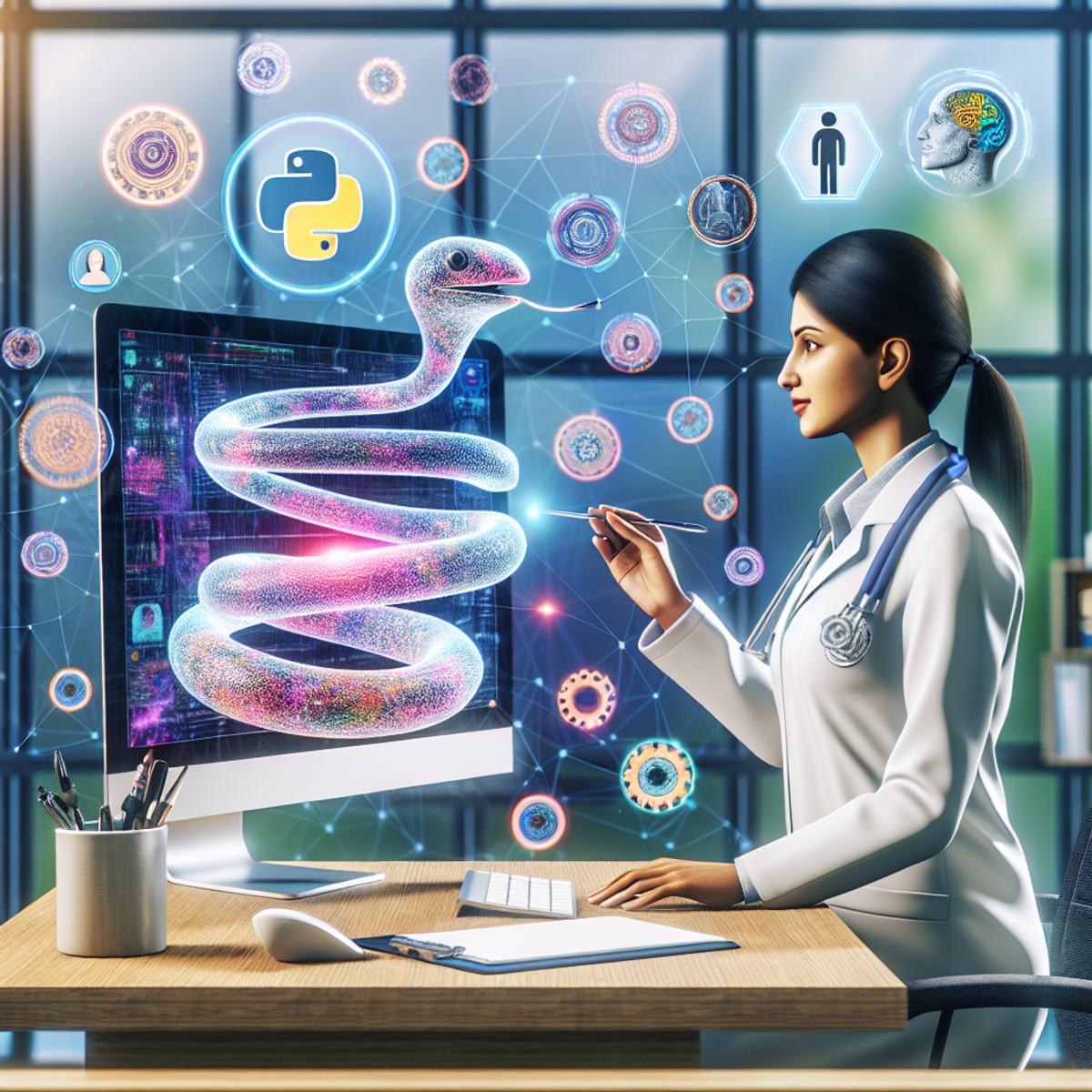
Python has a wide range of libraries and frameworks that support machine learning and AI applications in telemedicine. Some commonly used libraries include:
- Scikit-learn: A versatile machine learning library that offers various algorithms for classification, regression, clustering, and dimensionality reduction. It is widely used for creating predictive models based on healthcare data.
- PyTorch: A popular deep learning framework that allows developers to efficiently build and train neural networks. It provides dynamic computational graphs and supports GPU acceleration, making it suitable for complex medical image analysis tasks.
- TensorFlow: Another widely used deep learning framework that provides comprehensive tools for creating and deploying machine learning models. TensorFlow includes high-level APIs like Keras, which make it easy for developers to build deep learning models.
In summary, machine learning and artificial intelligence are changing telemedicine by automating medical interpretations, making virtual consultations possible, and improving patient care. Python's extensive libraries and frameworks make it the perfect choice for implementing machine learning algorithms and AI techniques in telemedicine applications. By using Python's capabilities, healthcare providers can improve diagnostic accuracy, enable remote monitoring, and provide more efficient and personalized care to patients.
3. Remote Patient Monitoring
Remote patient monitoring (RPM) is an essential part of telemedicine that allows healthcare to be provided continuously outside of traditional clinical settings. With RPM, patient data is collected and transmitted using technology for medical assessment and intervention. Python plays a significant role in improving RPM systems by offering smooth data processing and analysis for proactive healthcare management.
Benefits of Remote Patient Monitoring
Here are some advantages of using RPM systems:
- Continuous Health Tracking: RPM systems provide ongoing monitoring of a patient's health, making it possible to identify any worsening conditions early on.
- Personalized Care Plans: By using real-time health data, RPM enables the creation of customized care plans that can lead to better outcomes for patients.
- Cost Reduction: One of the benefits of RPM is its potential to lower healthcare expenses by minimizing hospital readmissions through proactive monitoring.
Wearable Devices for Healthcare Monitoring
In telemedicine setups, wearable devices are crucial for gathering vital signs and activity information from patients. These devices are designed to seamlessly integrate into RPM systems, providing a constant flow of valuable health data for medical professionals to analyze and act upon.
Some examples of wearable devices used for healthcare monitoring include:
- Smartwatches capable of tracking heart rate, sleep patterns, and physical activity.
- Continuous glucose monitors for diabetic patients to monitor blood sugar levels.
- Wearable ECG monitors that record heart rhythms and detect irregularities.
Integration Possibilities for Python in Remote Patient Monitoring
Python's versatility extends to the realm of RPM platforms, offering robust capabilities for streamlined data processing, analysis, and visualization. By leveraging Python within RPM solutions, healthcare providers can effectively manage the influx of patient-generated health data, leading to more informed decision-making and proactive interventions.
Here are key areas where Python excels in RPM platforms:
- Seamless integration with wearable device data streams for real-time analytics.
- Implementation of machine learning algorithms to identify patterns indicative of health concerns.
- Visualization tools for presenting patient health trends and anomalies in a user-friendly manner.
Use Cases and Relevant Python Tools
Use Case: Early Detection of Cardiac Arrhythmias
Through Python-powered RPM platforms, ECG data from wearable monitors is continuously analyzed using libraries such as SciPy and TensorFlow to detect irregular heart rhythms.
Use Case: Proactive Diabetes Management
Wearable glucose monitors feed real-time data into Python-enabled systems utilizing Pandas for data manipulation and analysis to tailor personalized care plans.
By harnessing Python's capabilities within remote patient monitoring frameworks, healthcare providers can effectively utilize the wealth of patient-generated health data while ensuring timely interventions and personalized care strategies.
The integration of wearable devices with remote patient monitoring brings forth an abundance of patient-generated health data that requires efficient processing and analysis. Python's extensive library ecosystem equips developers with the necessary tools to handle this influx of information seamlessly. Through its application in remote patient monitoring platforms, Python empowers healthcare professionals with actionable insights derived from real-time health data, ultimately contributing to improved patient outcomes in telemedicine scenarios.
Addressing Security and Regulatory Challenges in Python-based Telemedicine Solutions
Security concerns in telemedicine continue to be a critical aspect that needs to be addressed to ensure the privacy and confidentiality of patient data. As telemedicine relies heavily on digital technologies, it is crucial to implement robust security measures to protect sensitive information from unauthorized access or breaches. In addition, compliance with healthcare regulations is essential to maintain the integrity of telemedicine solutions, particularly in relation to patient privacy and data protection.
Importance of Data Security and Privacy Protection
Data security and privacy are paramount in Python-driven telemedicine applications. The following points highlight the significance of ensuring data security:
1. Confidentiality
Patient health information must be kept confidential to maintain trust between healthcare providers and patients. Unauthorized access or disclosure of this information can lead to severe consequences, such as identity theft or misuse of sensitive medical data.
2. Integrity
It is crucial to ensure that patient data remains intact and unaltered during transmission and storage. Any unauthorized modification or tampering with medical records can have serious implications for patient safety and treatment outcomes.
3. Availability
Telemedicine solutions need to provide uninterrupted access to patient health records and real-time communication between healthcare providers and patients. Ensuring high availability helps prevent delays in diagnosis, treatment, or emergency interventions.
Compliance with Healthcare Regulations
Compliance with relevant healthcare regulations is a fundamental requirement for Python-based telemedicine solutions. One such regulation in the United States is the Health Insurance Portability and Accountability Act (HIPAA). Here are some key aspects of regulatory compliance:
HIPAA Privacy Rule
The HIPAA Privacy Rule mandates the protection of individually identifiable health information (PHI) held by covered entities. Telemedicine platforms that handle PHI must adhere to the Privacy Rule by implementing appropriate safeguards, obtaining patient consent, and limiting the use and disclosure of PHI.
HIPAA Security Rule
The HIPAA Security Rule establishes standards for the security of electronic protected health information (ePHI). Telemedicine applications that store or transmit ePHI should implement technical, administrative, and physical safeguards to protect against unauthorized access, use, or disclosure.
HIPAA Breach Notification Rule
In the event of a breach involving unsecured PHI, covered entities are required to notify affected individuals, the Department of Health and Human Services (HHS), and sometimes the media. Telemedicine platforms need to have incident response plans in place to promptly address and report any breaches.
Compliance with other healthcare regulations specific to different countries or regions is also essential. For example, the General Data Protection Regulation (GDPR) in the European Union sets strict guidelines for the collection, processing, and storage of personal data.
Ensuring Security in Python-based Telemedicine Solutions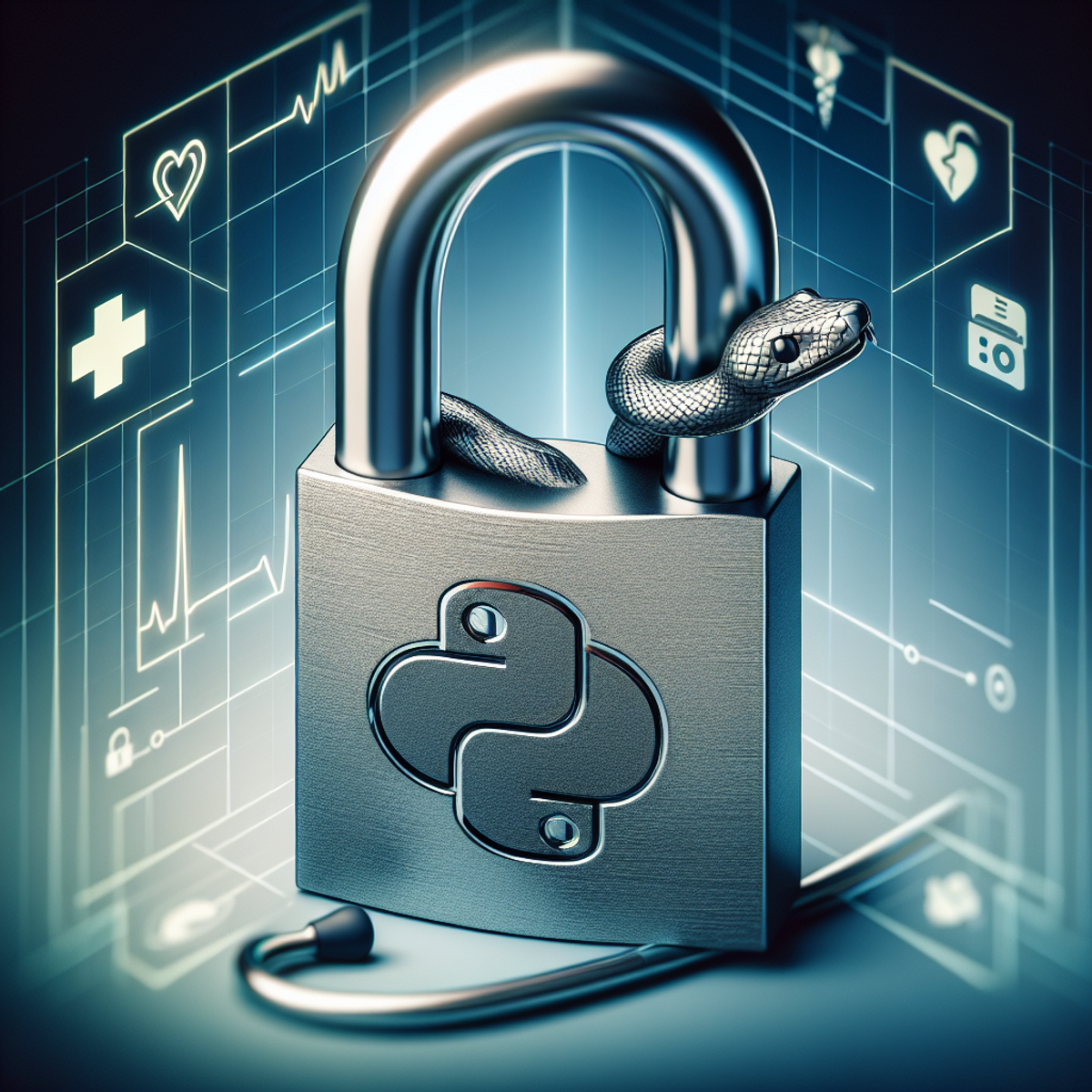
Python offers various tools and libraries that can help address security challenges in telemedicine applications. Here are some strategies to enhance security:
- Secure Authentication: Implementing secure authentication mechanisms, such as two-factor authentication or biometric authentication, helps ensure that only authorized individuals can access telemedicine platforms.
- Encryption: Employing strong encryption algorithms for data transmission and storage adds an extra layer of protection. Encryption techniques
Looking Ahead: Future Trends for Python in Telemedicine
As the field of telemedicine continues to evolve and expand, it is evident that Python will play a crucial role in shaping its future. The versatility and power of Python programming language make it an ideal choice for developing innovative solutions in healthcare. Here are some potential future developments that may leverage Python advancements to further enhance telemedicine capabilities:
1. Emerging technologies in telemedicine
With the rapid advancement of technology, new tools and techniques are constantly emerging in the field of telemedicine. Python is well-positioned to integrate with these emerging technologies and drive their implementation. For example:
- Internet of Things (IoT): The integration of IoT devices with telemedicine can enable real-time monitoring of patients' health conditions. Python's compatibility with IoT frameworks and libraries makes it a suitable language for developing IoT-enabled telemedicine applications.
- Virtual Reality (VR) and Augmented Reality (AR): VR and AR have the potential to revolutionize remote healthcare by providing immersive experiences for both doctors and patients. Python's support for graphics rendering and 3D modeling can facilitate the development of VR/AR-based telemedicine solutions.
2. Advancements in machine learning and artificial intelligence
Machine learning (ML) and artificial intelligence (AI) have already made significant contributions to healthcare, and their potential in telemedicine is vast. Python's rich ecosystem of ML/AI libraries and frameworks positions it as a preferred choice for developing intelligent telemedicine systems. Here are a few possibilities:
- Automated diagnosis: ML algorithms can analyze patient data, such as medical images or signals, to assist doctors in making accurate diagnoses remotely. Python's popular ML libraries like scikit-learn and TensorFlow can be utilized for building such diagnostic models.
- Natural language processing (NLP): NLP techniques can facilitate efficient communication between doctors and patients during virtual consultations. Python's NLTK and spaCy libraries offer a range of NLP capabilities for processing and analyzing medical text data.
3. Enhanced data analytics and visualization
Data analysis plays a crucial role in deriving meaningful insights from large healthcare datasets. Python's extensive libraries for data analytics and visualization empower telemedicine applications to make informed decisions. Here are some potential advancements:
- Real-time analytics: Python's scalability and real-time processing capabilities can enable telemedicine platforms to analyze patient data as it is generated, enabling timely interventions and personalized care.
- Interactive visualizations: Python libraries such as Plotly and Bokeh allow the creation of interactive visualizations that can enhance the presentation of medical data, making it more accessible and understandable for healthcare providers and patients.
It is important to note that these future trends are not limited to Python alone but represent the broader landscape of telemedicine innovation. However, Python's flexibility, readability, and extensive library ecosystem make it well-suited to drive these advancements forward.
Python is poised to continue playing a vital role in the future of telemedicine. As emerging technologies, machine learning, and advanced data analytics become more integrated into healthcare practices, Python's versatility will enable developers to create powerful
Conclusion
Stay informed about new developments and enhancements in Python's applications within the telemedicine landscape. Take an active interest in exploring the intersection of healthcare and technology, and consider how you can contribute to the ongoing evolution of remote healthcare solutions.
Embrace the potential for innovation and collaboration in this dynamic field, leveraging the power of Python to shape the future of telemedicine and improve access to quality healthcare for people around the world.
FAQs (Frequently Asked Questions)
What is the significance of remote healthcare?
The significance of remote healthcare lies in providing access to healthcare services, especially in situations where physical access to medical facilities is limited. Telehealth services leverage technology to bridge the gap between patients and healthcare providers in remote scenarios, ensuring that individuals can receive necessary medical attention regardless of their location.
How does Python contribute to telemedicine solutions?
Python plays a crucial role in powering various telemedicine solutions due to factors like its readability and extensive library ecosystem. It is a preferred choice among developers for building telemedicine applications, offering versatility and efficiency in addressing the complex requirements of remote healthcare technology.
What are the key areas where Python is utilized in telemedicine?
Python is utilized in telemedicine for data analysis and visualization, machine learning and artificial intelligence, as well as remote patient monitoring. It provides the necessary tools and frameworks for deriving meaningful insights from healthcare datasets, enabling automated interpretation of medical images or signals, and facilitating continuous health tracking through remote patient monitoring systems.
Why is data analysis important in telemedicine?
Data analysis is important in telemedicine as it helps derive meaningful insights from large healthcare datasets, ultimately improving diagnostic accuracy and treatment outcomes in remote healthcare settings. Python libraries such as Pandas, NumPy, Matplotlib, and Plotly are commonly used for data analysis and visualization in telemedicine applications.
Briefly mention the role of Python in machine learning and artificial intelligence for telemedicine.
Python plays a significant role in machine learning and artificial intelligence for telemedicine by enabling automated interpretation of medical images or signals for remote diagnosis. Additionally, it facilitates applications of AI algorithms, such as natural language processing, in virtual consultations between doctors and patients.
What are the benefits of remote patient monitoring systems?
Remote patient monitoring systems offer benefits such as continuous health tracking for early detection of deteriorating conditions. They utilize wearable devices for collecting vital signs or activity data in telemedicine setups. Python integration within these platforms enables seamless data processing and analysis, contributing to improved patient care.
How does Python address security concerns in telemedicine?
Python addresses security concerns in telemedicine by allowing developers to implement robust data security and privacy protection measures within telemedicine applications. This is essential for ensuring compliance with relevant healthcare regulations, such as HIPAA in the United States.
What are some potential future developments leveraging Python advancements for telemedicine?
Potential future developments may leverage Python advancements to further enhance telemedicine capabilities through emerging technologies. These developments could include improved algorithms for medical image analysis, enhanced natural language processing capabilities for virtual consultations, and more efficient data processing methods for remote patient monitoring.
What should readers do to stay updated with the latest innovations in Python and telemedicine?
Readers are encouraged to stay updated with the latest innovations in Python and telemedicine by exploring opportunities for contributing to this evolving field of healthcare technology. Staying informed about new developments will help individuals remain at the forefront of advancements in both Python programming and telemedicine.


Comments
Post a Comment